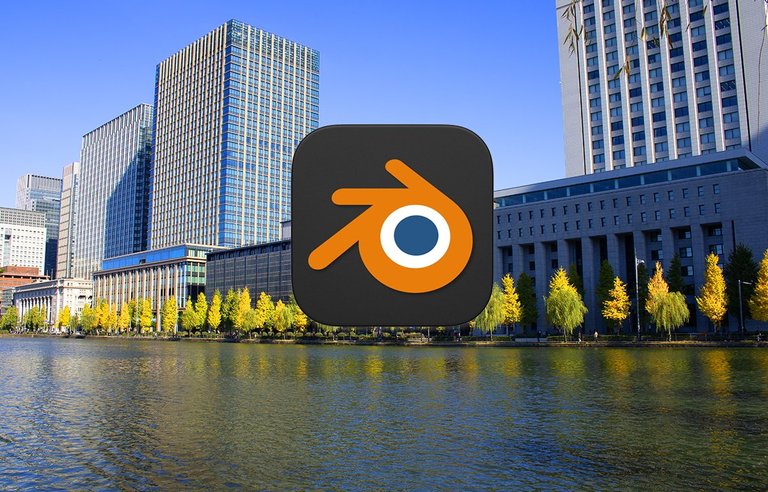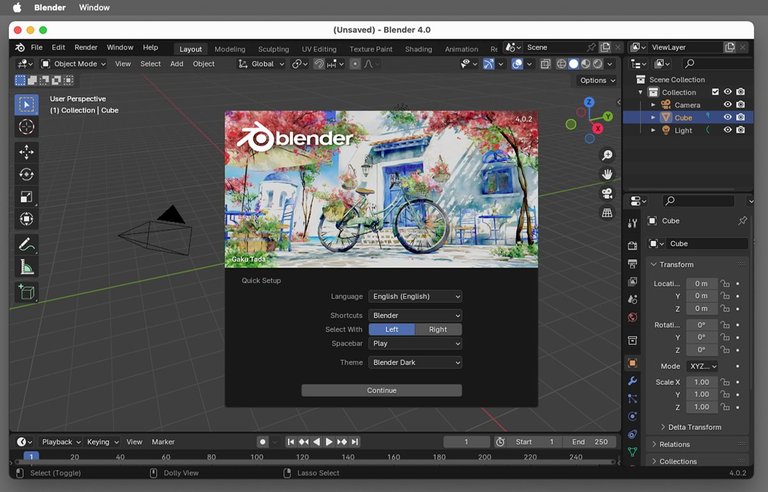
Blender 4.0 released with new features and better Apple Silicon performance
Blender Foundation has released version 4 of the popular Blender 3D design app, bringing interface changes, feature improvements, and most importantly speed boosts for Apple Silicon Macs.
Blender is a leading 3D modeling application for Mac, Windows, and Linux systems. Available free from the Blender Foundation, Blender has become popular with artists, game developers, and animators.
Blender allows you to construct, import, modify, and export 3D models to be used in other applications such as game design tools, architecture and scientific applications, and illustration programs.
Blender 4 offers a host of new features, many of which have been requested by users for years.
Watch the Latest from AppleInsider TV
Light-linking
Blender 4's new light-linking controls the influence of each light in a 3D scene individually for each object or collection in the scene. With light linking, you can direct individual light sources onto specific objects and also control reflected light on those objects.
Light-linking controls now also allow you to determine how shadows and lights interact with each object. Light-linking and shadow-linking was one of the most requested features for Blender 4. Users can now also set which objects cast shadows and which ones don't in the same scene.

With light linking and shadow linking you can now set individual light controls for each object directly in the scene panel in Blender.
Asset shelf
Blender 4 now offers a new asset shelf for pose assets at the bottom of the editor window, which allows you to access and switch between assets without having to open a sepearte editor. To view an asset simply open the asset shelf, and click an asset in the thumbnail list at the bottom of the editor window.
The selected asset appears in the main editor window when in pose mode.
Once in pose mode you can now use on-screen slider tools in the editor to preview pose animations on assets - allowing you to see what animations will look like when final rendered characters move.
The asset shelf only currently works in pose mode and requires the Blender pose library add-on to be enabled.
Shaders
Blender's shaders tool palette has been improved to group related shader properties together and provide easy access by clicking shader categories, then adjusting properties within each section. In Blender 4 you can now control more individual aspects of shader properties to refine object details to an even greater level than previously possible.
Several shader enhancements have been added for specular highlights, fabric, dust, and sheen.
Object snapping and transforms
Previously, snapping 3D objects to each other in Blender's user interface was imprecise. It was difficult to tell Blender which object vertices to use to snap objects to each other.
Objects could be previously snapped by vertex or in increments.
In Blender 4 you can now press G, then B on the keyboard after selecting objects to select which vertices to use to snap objects to each other.
Once you've pressed the snap keys, you can then drag objects in the UI with a mouse or trackpad to position objects for snapping. When an object is positioned where you want it, click the mouse to snap the object into place.
Another new snapping feature is Snap Base editing which allows you to interactively define how you want objects to snap together. To invoke Snap Base editing, press B on the keyboard while transforming an object to edit the snap base.
Node tools
In Blender 4 you can now define your own reusable tools in node tools using a drag-and-drop tool editor. Node tools are a bit like scripting except you can visually define tools from lists of options or searching for functions, drag-and-drop to define tool processes, then go back to layout edit mode and apply the tools to objects to modify them.
Node tools are powerful and save time because they allow you to perform multiple actions on objects without having to repeat the steps in the tool each time.
Anything you could previously do by applying geometry nodes in Blender to modify objects can now be run using node tools.
AGX color management
In previous versions of Blender, colors were mapped from their actual mathematical values into the standard 32-bit color palette of 16.7 million colors with varying results. 16.7 million is the maximum number of colors the human eye and brain can distinguish.
However, far more colors exist in the real world and sometimes when software recalculates shading and the interactions between colors and luminance levels, colors can get washed out, darkened, or disappear entirely. This is particularly true as color values approach pure white.
Blender 4 features AGX color management as a default which adds more accurate support for combining and mixing colors when objects are rendered. With AGX it's now much easier to prevent washouts, darkening, and other problems with the interaction between object colors and lighting.
New controls for AGX management in Blender allow designers to better control subtle aspects of colors in brightly or dimly lit scenes.
Users can also apply AGX management to existing Blender files by opening them in Blender 4 and changing color and light settings in the user interface.
Incremental file saves
Blender 4's File Menu now has a new menu item Save Incremental which automatically appends an incremented number to saved files. Using Save Incremental, you can now save a file with multiple incremental versions in case you later want to go back to a previously saved version.
Most Blender 4 menu items can also now be searched for quick item location.